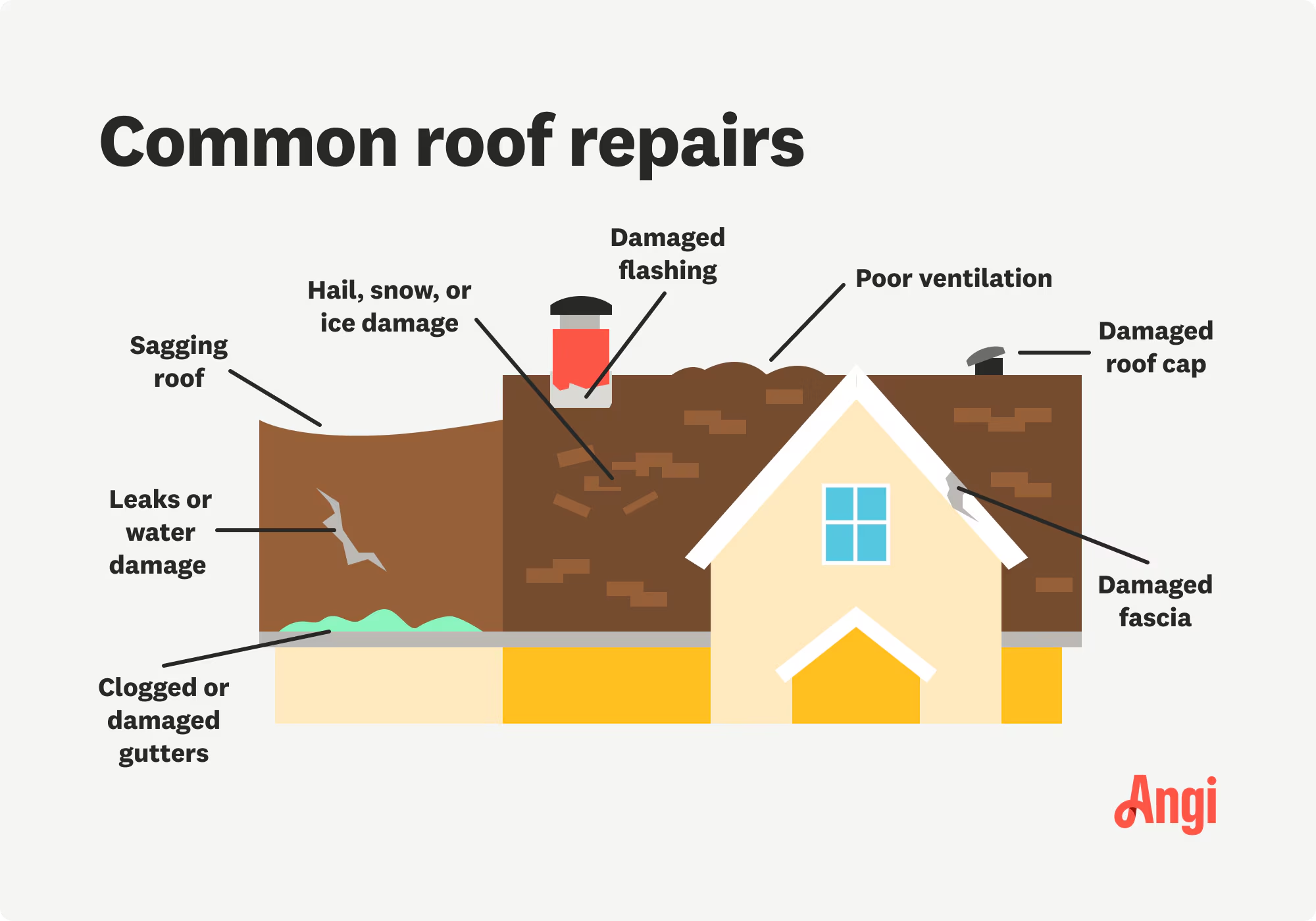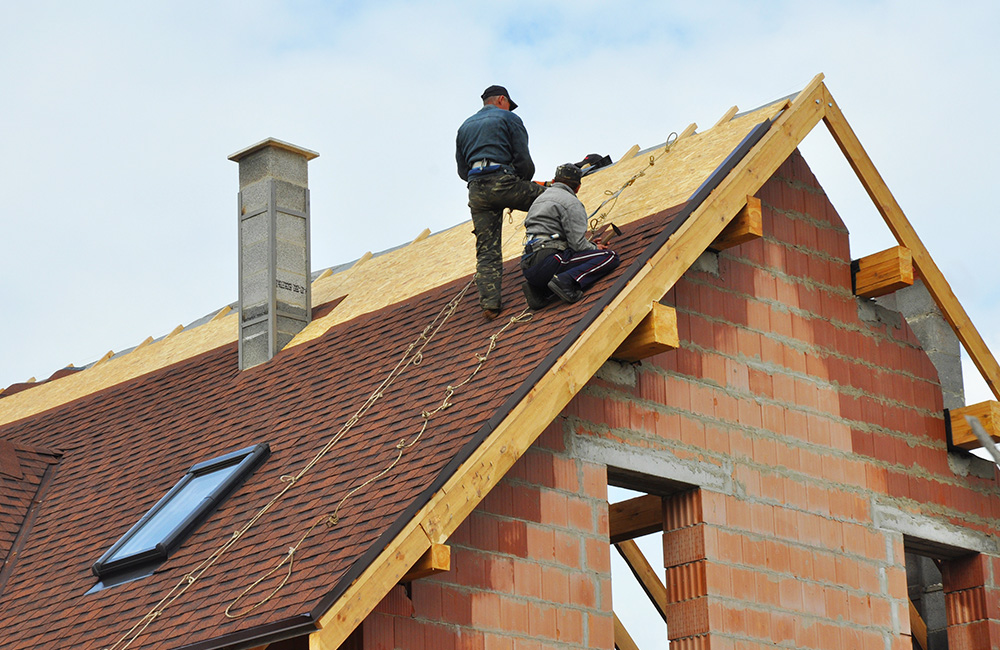Comprehending the Various Types of Roof Coverings: A Comprehensive Guide for Homeowners
With a selection of choices-- ranging from the traditional gable to the modern flat-- each kind offers one-of-a-kind benefits and difficulties that need to align with the homeowner's details requirements and ecological considerations. As we explore the complexities of various roof covering types, it comes to be evident that one size does not fit all; the appropriate option may amaze you.
Gable Roofings
Saddleback roofs, identified by their triangular shape, are among the most prominent roofing styles as a result of their simplicity and effectiveness in losing water and snow. This design features 2 sloping sides that meet at a ridge, enabling efficient drain and minimizing the danger of water buildup. The steep pitch commonly connected with saddleback roofs enhances their capability to take care of heavy rainfall, making them ideal for various climates.
In enhancement to their practical benefits, saddleback roofs supply aesthetic adaptability. They can be adapted to numerous architectural styles, from conventional to contemporary homes. The design can additionally fit extra functions such as dormer home windows, which improve natural light and ventilation in the attic room area.
In addition, gable roofs supply ample space for insulation, adding to energy performance. Property owners can choose from a variety of roofing materials, consisting of asphalt shingles, metal, and tiles, even more improving personalization alternatives.
Despite their advantages, saddleback roofs may require additional support in areas susceptible to high winds or hefty snowfall. Overall, the gable roofing system stays a preferred option as a result of its mix of capability, durability, and visual allure.
Apartment Roofs
Level roofs are often recognized for their minimal layout and sensible applications, especially in commercial and commercial setups (oahu roofing). These roofing systems feature a virtually straight or horizontal surface area, which enables for simple building and flexible room utilization. While they might lack the visual charm of pitched roofing systems, level roofs use various advantages, specifically in city atmospheres where maximizing room is important
One of the primary advantages of flat roof coverings is their availability. House owners can use the roof area for various objectives, such as rooftop gardens, terraces, or photovoltaic panel setups. In addition, flat roofings are usually extra affordable to keep and set up contrasted to their sloped counterparts, as they need less materials and labor.
Common products made use of for flat roofings include built-up roof covering (BUR), changed asphalt, and single-ply membrane layers, each offering distinctive advantages. Overall, flat roofing systems serve as a functional and adaptable choice for many homeowners and companies alike.
Hip Roofs
Hip roofing systems are defined by their sloped sides that converge at the top, creating a ridge. This style stands out from saddleback roofs, as all four sides of a hip roof incline downwards towards the wall surfaces, giving an extra steady structure. The angle of the inclines can differ, enabling for flexibility in building aesthetic appeals and performance.
Among the primary benefits of hip roofings is their ability to endure heavy winds and adverse climate condition. The sloped surfaces allow better water drainage, minimizing the danger of leakages and water damage. Additionally, hip roofing systems supply boosted attic room, which can be utilized for storage or also converted right into habitable locations.
Nevertheless, building a hip roof covering can be a lot more costly and complicated than simpler roofing types, such as saddleback roofs. The additional product and labor associated with developing the slopes and making certain proper architectural integrity can bring about higher costs. Regardless of these disadvantages, several property owners favor hip roofings for their resilience, visual allure, and potential for power efficiency.
Mansard Roofing Systems
Mansard roof coverings, frequently recognized by their special four-sided design, function 2 inclines on each side, with the reduced incline being steeper than the upper. This building design, stemming from France in the 17th century, is not just aesthetically appealing yet useful, as it makes best use of the usable space in the upper floorings of a building. The steep lower slope allows for more clearance, making it an excellent option for attics or lofts, which can be exchanged living rooms.
Mansard roof coverings are characterized by their flexibility, fitting numerous architectural styles, from traditional to modern. They can be constructed with different materials, including asphalt shingles, slate, or metal, providing property owners with a series of options to fit their budgets and preferences. Additionally, the style enables for the integration of dormer windows, enhancing all-natural light and air flow in the top degrees.
Nonetheless, it is necessary to published here take into consideration the possible downsides. Mansard roof coverings might need more maintenance due to the intricacy of their layout, and their high slopes can be challenging for snow and rainfall overflow. In general, mansard roofs combine style with practicality, making them a prominent selection amongst house original site owners seeking distinctive building features.
Lost Roof Coverings
As house owners increasingly look for simplicity and performance in their architectural designs, lost roofing systems have emerged as a prominent selection. Characterized by a solitary sloping aircraft, a shed roofing system presents a minimal visual that complements various home designs, from contemporary to rustic.
Among the primary advantages of a shed roof covering is its straightforward building and construction, which typically converts to lower labor and material costs. This design enables effective water drainage, decreasing the risk of leakages and water damages. Additionally, the vertical slope supplies adequate space for skylights, improving all-natural light within the inside.
Lost roofs likewise supply versatility in terms of usage. They can be successfully incorporated into enhancements, garages, or exterior frameworks like pavilions and sheds. Moreover, this roofing style can accommodate various roof materials, including steel, asphalt tiles, or perhaps environment-friendly roofs, aligning with eco-friendly initiatives.
Nevertheless, it is vital to think about local climate problems, as heavy snow loads might demand changes to the roofing's angle or framework. Generally, dropped roofings provide a useful and cosmetically pleasing alternative for home owners aiming to maximize capability without jeopardizing style.
Final Thought


Gable roofings, characterized by their triangular shape, are amongst the most preferred roofing styles due to their simplicity and efficiency in losing water and snow. oahu roofing. The steep pitch typically connected with gable roof coverings boosts their capability to manage hefty rainfall, making them suitable for various environments
While they may lack the visual charm of pitched roof coverings, level roofs supply numerous advantages, particularly in metropolitan atmospheres where making best use of space is crucial.
